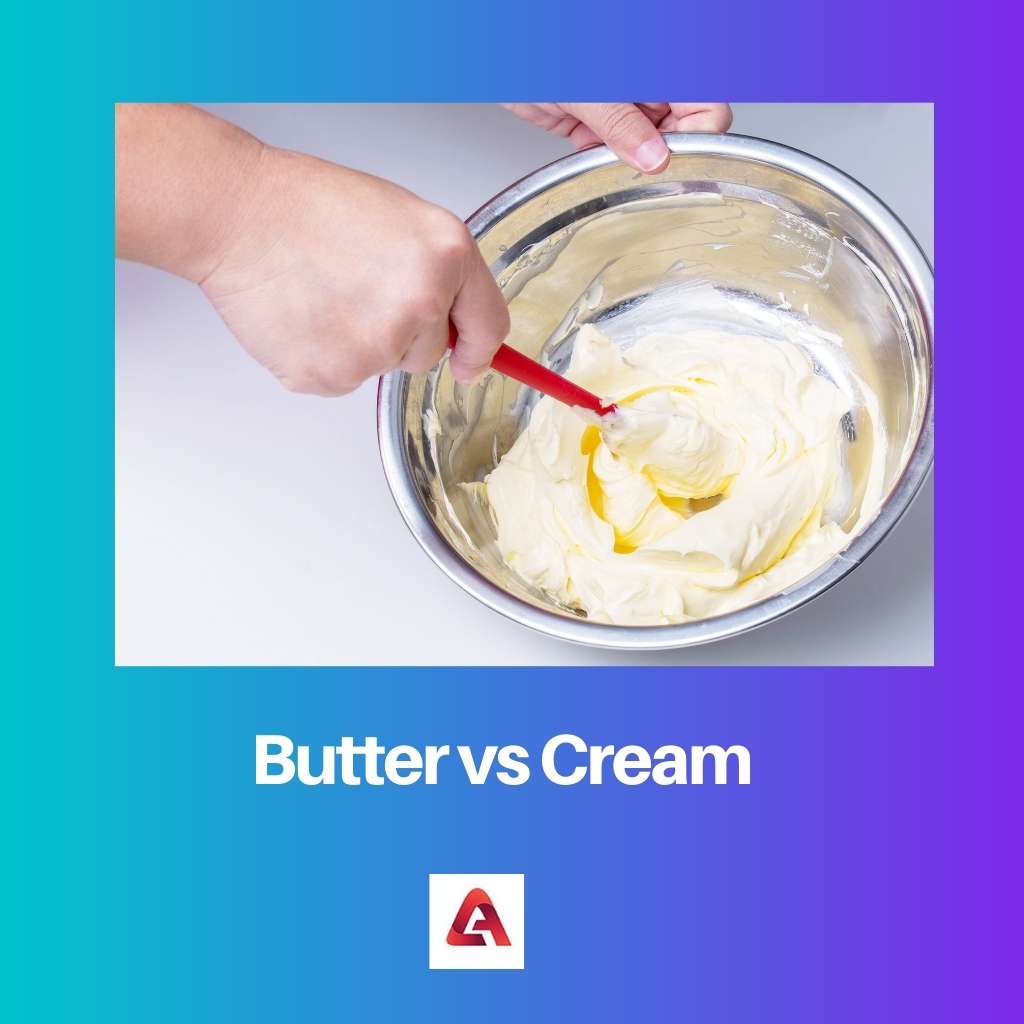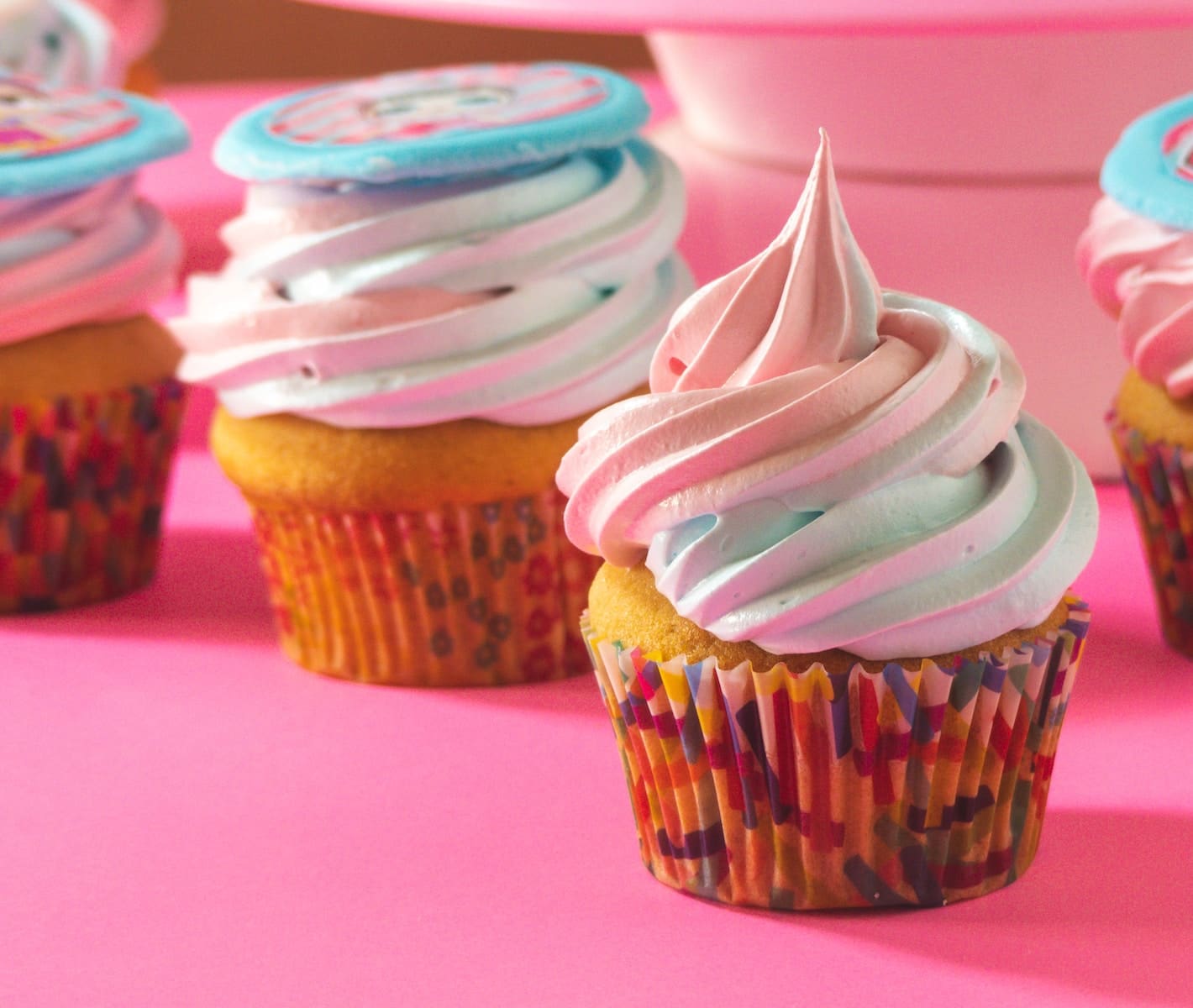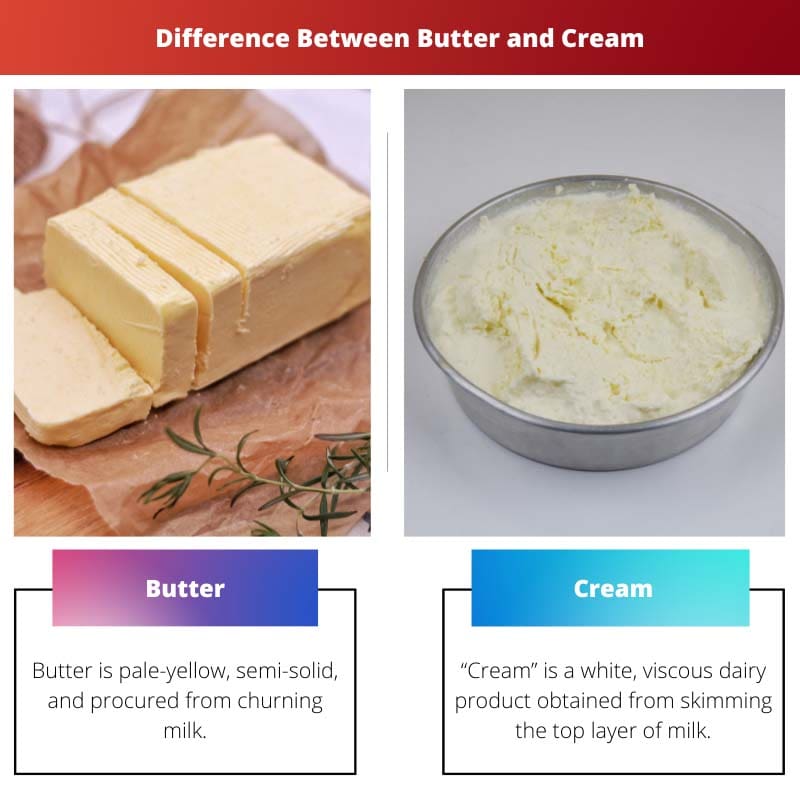Life is full of daily hardships, and the only way to enjoy yourself in between them is to treat yourself. Traveling to new places, visiting game zones, purchasing unique products, and indulging in delectable cuisines are all examples of self-rewarding.
In terms of enjoying food, the right ingredients are required to create a delicious dish with numerous health benefits.
Butter and cream, together with numerous spices, are widely used as foundation ingredients to impart flavor to practically all cuisines around the world.
Butter and cream both are dairy products which means they are derived from the milk of mammals, cows. However, Butter and cream can also be made from goat’s milk, camel’s milk, sheep’s milk, etc.
Key Takeaways
- Butter is a dairy product made by churning cream, while the cream is the high-fat layer skimmed from milk.
- Butter has a higher fat content and is solid at room temperature, while the cream is liquid.
- The cream is used in various recipes for its rich taste and texture, while butter is a spread and a cooking or baking ingredient.
Butter vs Cream
Butter is a semi-solid dairy product made from the fat and protein components of churned cream. It is 80 per cent milk fat. Cream is a dairy product composed of the higher-fat layer. It is skimmed from the top of milk before homogenization and is only 30 to 55 per cent milkfat.

Most of the time, butter created from cow’s milk is nothing more than drained cream. The fat is removed from the buttermilk by churning it with cow’s milk or cream.
To obtain the intended result, butter. This process is followed by draining the water. It can then be added with color and a little bit of salt to get butter.
On the other hand, the cream is made by sterilizing milk at extremely high temperatures. It’s thick milk with a lot of saturated fat, known as butterfat.
Because cream has such a mild flavor, it is frequently used as an ingredient in previously flavored or prepared foods.
Comparison Table
| Parameters of Comparison | Butter | Cream |
|---|---|---|
| Definition | Butter is pale-yellow, semi-solid, and procured from churning milk. | “Cream” is a white, viscous dairy product obtained from skimming the top layer of milk. |
| Texture | Butter is semi-solid in texture. | The cream is fluid-like in texture. |
| Oil consistency | Butter has oil in it. | The cream has little to no oil in it. |
| Butterfat | Butter has a low quantity of butterfat in it. | The cream has a high quantity of butterfat in it. |
| Milkfat | Butter has a high quantity of milkfat in it. | The cream has a low quantity of milkfat in it. |
| Originated | Traces of butter can be found back in 8000 B.C. | The cream was said to have first been used in the 9th century A.D. |
| Form | Butter has a thick and dense form. | The cream has a viscous form. |
| Water content | Butter has no water in it. | The cream has a high amount of water in it. |
| Types | There are different types of butter, such as whipped, clarified, unsalted, salted butter, etc. | There are different types of cream, such as double, half-and-half, sour cream, clotted cream, etc. |
What is Butter?
Butter is a solid type of milk that is made from cow milk and has a mild flavor. It has a pale-yellow appearance because of the addition of food coloring.
It’s prepared by churning milk until the butterfat (solid), and buttermilk (liquid) are separated. Following that, the liquid is drained.
Butter has a high amount of milkfat and a lower amount of butterfat. There are different types of butter, such as whipped, clarified, unsalted, salted butter, etc.
Butter can be used for a variety of things, such as
- Baking
- Making sauce
- As a dip
- As an ingredient in cooking
- Making buttercream, etc.
It is not precisely known when butter was invented, but according to ancient history, apparently, some nomad was traveling with bags of milk tied to the mammal that he was riding on.
Along the journey, the milk was continuously churned, resulting in butter. It is said that the earliest evidence of butter can be traced back to 8000 B.C., in ancient Africa.

What is Cream?
When milk is retrieved from a cow, it comes in different layers, as fat is lighter than milk. The cream is derived from skimming the top layer.
It is very viscous in nature. The cream doesn’t have any rich flavors of its own, and because of its consistency, it is used as a supporting ingredient or additive in the preparation of food.
There are different types of cream, such as double, half-and-half, sour cream, clotted cream, etc. The cream is, however, rich in nutritional benefits, such as
- Vitamin A
- Vitamin D
- Vitamin E
- Vitamin K
- Fat-soluble vitamins, etc.
The cream was known to be first used by the Romans in the 9th century A.D. However, it has been popularized by the Viennese in the last 300 years.

Main Differences Between Butter and Cream
- Butter is semi-solid in texture, while the cream is viscous or fluid-like in texture.
- Butter has a mild taste of salt and is an additive of oil and food coloring, while cream has a naturally sweet flavor passed on from the milk used in making it.
- Butter has a higher quality of milk fat. On the other hand, the cream has a lower quantity of milk fat.
- Butter has a lower quantity of butterfat than cream, which has a higher quantity of butterfat in it.
- Butter has low water content in it, approximately lower than 15%, while the cream is enriched with water.

